(5) rams’ skins dyed red, dolphin skins, and acacia wood;
Translation: JPS Contemporary Torah, see note:
"Or “dugong”; meaning of Hebrew taḥash uncertain."
The German scholar Gesenius, the first edition of whose Hebrew Lexicon appeared in 1812, offered “seal” as a possible translation, on the basis of Arabic تُخَسْ tuḥash “porpoise,” explaining that the ancient Hebrews would have used this term as a catch-all for many different creatures that “they neither knew nor distinguished with accuracy.”
Francis Brown, S.R. Driver, and Charles A. Briggs, three British Biblical scholars, argued in their A Hebrew and English Lexicon of the Old Testament that תחש means “dolphin”. They arrived at this definition through comparison with Arabic تُخَسْ tuḫas “dolphin”. Commonly known as BDB, this lexicon is one of the basic books for all students of the Bible, including rabbis.This standard reference for Biblical Hebrew and Biblical Aramaic was first published in 1906.
That same Arabic word means the sea mammal Dugong hemprichi. So some endeavor to identify it with the taḥash. These enormous vegetarians can be found in warm coastal waters from East Africa to Australia, including the Red Sea, Indian Ocean, and Pacific. Dugongs are related to manatees and are similar in appearance and behavior— though the dugong's tail is fluked like a whale's. The Dugong appears at intervals on the shores of Sinai and is hunted by the Bedouin, who make curtains and shoes from its skin. The Dugong measures 8 to 10 feet.

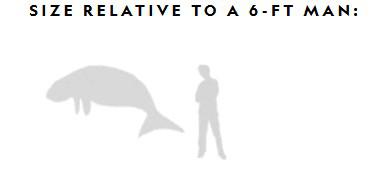
Others identify the taḥash with another sea mammal, Monodon monoceros, which occasionally reaches the shores of the Red Sea. It has mottled skin and a single tooth-horn on its forehead, measuring 13 to 20 feet.

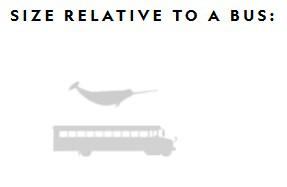
[Animal information source: National Geographic.com]
~ What can go wrong in a translation if you think that a similar sounding word in a related language can be applied to another language? Can you give examples?
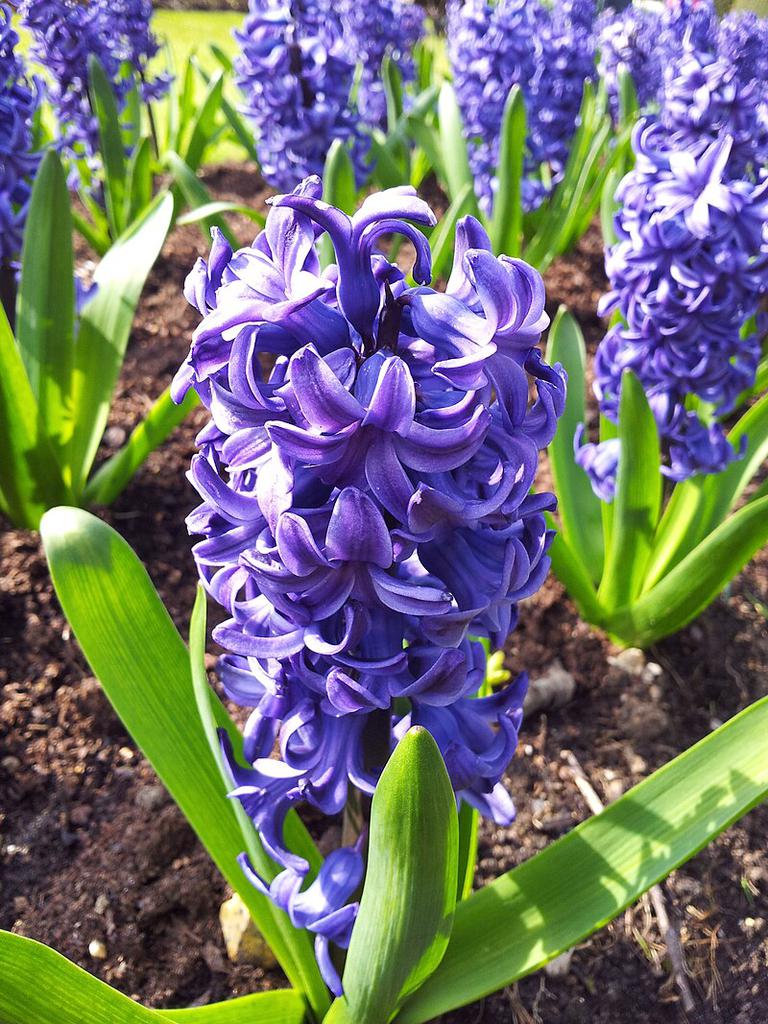
~ Josephus does the same: " Hereupon the Israelites rejoiced at what they had seen and heard of their conductor, and were not wanting in diligence according to their ability; for they brought silver, and gold, and brass, and of the best sorts of wood, and such as would not at all decay by putrefaction; camels’ hair also, and sheep-skins, some of them dyed of a blue color, and some of a scarlet; some brought the flower for the purple color, and others for white, with wool dyed by the flowers aforementioned; and fine linen and precious stones, which those that use costly ornaments set in couches of gold; they brought also a great quantity of spices; for of these materials did Moses build the tabernacle, which did not at all differ from a movable and ambulatory temple. " (Antiquities of the Jews, 3:102; see entire text here:
https://lexundria.com/go?q=J.+AJ+3.99%E2%80%933.150&v=wst
רבי אלעזר שאל מהו לעשות אוהל מעור בהמה טמאה. והכתיב ועורות תחשים. ר' יהודא ור' נחמיה ורבנן. ר' יהודא אומר טיינין לשם צובעו נקרא. ור' נחמיה אמר גלקטינין. ורבנן אמרין מין חיה טהורה. וגדילה במדבר. ותיי כיי דמר ר' לעזר בי ר' יוסי ר' אבהו בשם רבי שמעון בן לקיש בשם ר' מאיר כמין חיה טהורה ברא הקב"ה למשה במדבר כיון שעשה בה מלאכת המשכן נגנזה. ר' אבון אמר קרש היה שמה. תני רבי הושעיה דחדא קרן ותיטב לה' משור פר מקרין ומפריס. מקרן כתב רחמנא.
Rebbi Eleazar asked, may one make the Tent of leather from an impure animal? But is it not written, and taḥaš skins. Rebbi Jehudah, Rebbi Nehemiah and the rabbis. Rebbi Jehudah says, violet; it was called thus because of its color. Rebbi Nehemiah said, blue. But the rabbis say, a kind of pure animal which grows up in the desert. It comes like what Rebbi Eleazar ben Rebbi Yose, Rebbi Abbahu, Rebbi Simeon ben Laqish in the name of Rebbi Meïr said: The Holy One, praise to Him, created for Moses in the desert a kind of pure animal. After the work of the Tabernacle had been finished it was hidden. Rebbi Abun said, its name was qereš. Rebbi Hoshaia stated, a unicorn: "It is preferable to the Eternal over a cattle ox, makrin mafris" (Psalms 69:32) which sprouts a horn and has split hooves. The All-Merciful wrote, "it sprouts a horn."
S. M. Perlman (Zoologist, set 4, XII, 256, 1908) suggests that the okapi, a species of antelope, is the animal indicated by tachash.
Nathan Slifkin, in his Mysterious Creatures: Intriguing Torah Enigmas of Natural and Unnatural History of 2003, affirms on page 82 that the tachash could be a giraffe, as some giraffes do have just one horn in their heads. He explains more here: https://www.rationalistjudaism.com/p/and-you-shall-cover-it-with-tachash
"You are all wrong!" says British Assyriologist and scholar of the Ancient Near East Stephanie Dalley
(ד) וּמוֹלְדוֹתַ֗יִךְ בְּי֨וֹם הוּלֶּ֤דֶת אוֹתָךְ֙ לֹא־כָרַּ֣ת שָׁרֵּ֔ךְ וּבְמַ֥יִם לֹא־רֻחַ֖צְתְּ לְמִשְׁעִ֑י וְהׇמְלֵ֙חַ֙ לֹ֣א הֻמְלַ֔חַתְּ וְהׇחְתֵּ֖ל לֹ֥א חֻתָּֽלְתְּ׃ (ה) לֹא־חָ֨סָה עָלַ֜יִךְ עַ֗יִן לַעֲשׂ֥וֹת לָ֛ךְ אַחַ֥ת מֵאֵ֖לֶּה לְחֻמְלָ֣ה עָלָ֑יִךְ וַֽתֻּשְׁלְכִ֞י אֶל־פְּנֵ֤י הַשָּׂדֶה֙ בְּגֹ֣עַל נַפְשֵׁ֔ךְ בְּי֖וֹם הֻלֶּ֥דֶת אֹתָֽךְ׃ (ו) וָאֶעֱבֹ֤ר עָלַ֙יִךְ֙ וָֽאֶרְאֵ֔ךְ מִתְבּוֹסֶ֖סֶת בְּדָמָ֑יִךְ וָאֹ֤מַר לָךְ֙ בְּדָמַ֣יִךְ חֲיִ֔י וָאֹ֥מַר לָ֖ךְ בְּדָמַ֥יִךְ חֲיִֽי׃ (ז) רְבָבָ֗ה כְּצֶ֤מַח הַשָּׂדֶה֙ נְתַתִּ֔יךְ וַתִּרְבִּי֙ וַֽתִּגְדְּלִ֔י וַתָּבֹ֖אִי בַּעֲדִ֣י עֲדָיִ֑ים שָׁדַ֤יִם נָכֹ֙נוּ֙ וּשְׂעָרֵ֣ךְ צִמֵּ֔חַ וְאַ֖תְּ עֵרֹ֥ם וְעֶרְיָֽה׃ (ח) וָאֶעֱבֹ֨ר עָלַ֜יִךְ וָאֶרְאֵ֗ךְ וְהִנֵּ֤ה עִתֵּךְ֙ עֵ֣ת דֹּדִ֔ים וָאֶפְרֹ֤שׂ כְּנָפִי֙ עָלַ֔יִךְ וָאֲכַסֶּ֖ה עֶרְוָתֵ֑ךְ וָאֶשָּׁ֣בַֽע לָ֠ךְ וָאָב֨וֹא בִבְרִ֜ית אֹתָ֗ךְ נְאֻ֛ם אֲדֹנָ֥י יֱהֹוִ֖ה וַתִּֽהְיִי־לִֽי׃ (ט) וָאֶרְחָצֵ֣ךְ בַּמַּ֔יִם וָאֶשְׁטֹ֥ף דָּמַ֖יִךְ מֵעָלָ֑יִךְ וָאֲסֻכֵ֖ךְ בַּשָּֽׁמֶן׃ (י) וָאַלְבִּישֵׁ֣ךְ רִקְמָ֔ה וָאֶנְעֲלֵ֖ךְ תָּ֑חַשׁ וָאֶחְבְּשֵׁ֣ךְ בַּשֵּׁ֔שׁ וַאֲכַסֵּ֖ךְ מֶֽשִׁי׃ (יא) וָאֶעְדֵּ֖ךְ עֶ֑דִי וָאֶתְּנָ֤ה צְמִידִים֙ עַל־יָדַ֔יִךְ וְרָבִ֖יד עַל־גְּרוֹנֵֽךְ׃ (יב) וָ֥אֶתֵּֽן־נֶ֙זֶם֙ עַל־אַפֵּ֔ךְ וַֽעֲגִילִ֖ים עַל־אׇזְנָ֑יִךְ וַעֲטֶ֥רֶת תִּפְאֶ֖רֶת בְּרֹאשֵֽׁךְ׃
(4) As for your birth, when you were born your navel cord was not cut, and you were not bathed in water to smooth you; you were not rubbed with salt, nor were you swaddled. (5) No one pitied you enough to do any one of these things for you out of compassion for you; on the day you were born, you were left lying, rejected, in the open field. (6) When I passed by you and saw you wallowing in your blood, I said to you: “Live despite your blood.” Yea, I said to you: “Live despite your blood.” (7) I let you grow like the plants of the field; and you continued to grow up until you attained to womanhood, until your breasts became firm and your hair sprouted. You were still naked and bare (8) when I passed by you [again] and saw that your time for love had arrived. So I spread My robe over you and covered your nakedness, and I entered into a covenant with you by oath—declares the Sovereign GOD; thus you became Mine. (9) I bathed you in water, and washed the blood off you, and anointed you with oil. (10) I clothed you with embroidered garments, and gave you sandals of tachash to wear, and wound fine linen about your head, and dressed you in silks. (11) I decked you out in finery and put bracelets on your arms and a chain around your neck. (12) I put a ring in your nose, and earrings in your ears, and a splendid crown on your head.
Whatever Tachash is, it must be suitable for covering the mishkan and its objects, as well as a material for quality shoes
Enter faience work:
Archaeologists have shown that the making of faience beads and their use in decorating leather was already an ancient skill by the time Exodus was written.
Faience is described as "“the first high-tech ceramic” (Vandiver and Kingerey, 1987) and as a vitreous material, a kind of ceramic that contains a body of sintered crushed quartz and with an alkaline glaze on the surface; the material is virtually clay-‐free (Griffin, 2002; Nicholson, 2007; Tite & Shortland, 2008) and such beads have been found in Mesopotamia dating back to the fourth millennium BCE.
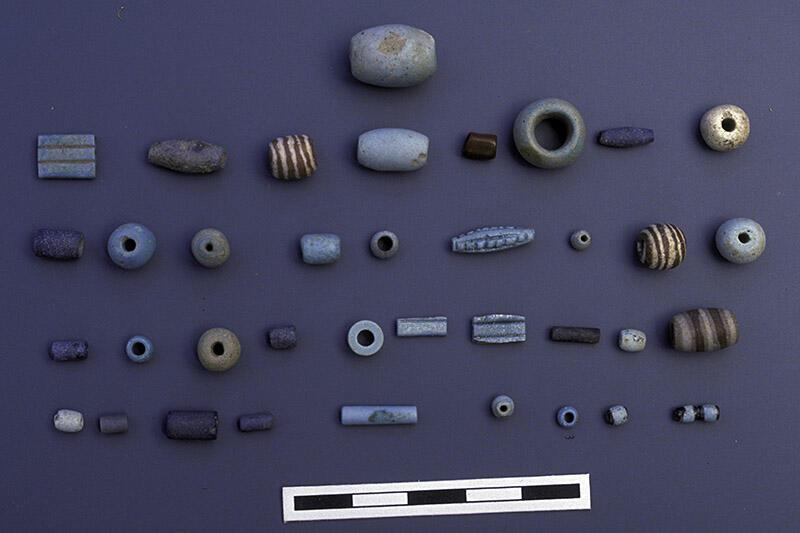
Dalley (2000)
" I am sure I am not the only Assyriologist whose heart has sunk every time any form of the word [duhsu] appeared” (p. 8).
...
The leather was used for sandals in the craft texts from Isin of the early second millennium BCE, and in Old Babylonian texts from Mari … In the Isin craft archive it was particularly interesting that the word was found in connection with goat or sheep hide (not ox-hide) and is often listed together with madder-red-dyed hides, especially ox-hide This is the same combination as we find for the covering of the tabernacle in Exodus, and the covering of the table of offerings in Numbers. This similarity, together with the use for sandals, gives substance to the idea of reviving a link between the two words (pp. 10-11).
...
" [If we think of] the surface effect of the hyacinth flower rather than its colour, it is evident that it resembles a beaded surface. It is most commonly blue, varying in shade, but can also be white or pink. Huakinthinos in other Greek texts is used of fringes, selvedges and coats of mail, giving a range of context similar to that of Akkadian duhsu.
Dr Gillian Eastwood-Vogelsang in Leiden, working on the clothing in the tomb of Tutankhamun, has identified specific items imported from western Asia, by certain features of design. One of those items consists of beaded sandals which she describes as ’embellished with an intricate design of gold bosses and beadwork in carnelian, turquoise and possibly lapis lazuli’.
In the Amarna letter EA 22 the Mittanian king sent to Akhenaten one pair of duhsu-shoes, studded with ornaments of gold, of hiliba stone, etc. If duhsu here means some kind of beadwork, the description would match not only Tutankhamun’s sandals but also certain beaded objects which have been found intact on excavations in Mesopotamia. (p. 12)
...
Hebrew tahas is cognate with Hurrian / Akkadian / Sumerian duhsu. It denotes beading and attaching pendants, and inlaying in stone, metal, faience and glass, and is usually made on leather but sometimes also wool or linen, or as cloisonné in precious metals, timber, etc.
The profession which manufactured them was not involved in dyeing leather, but was a refiner of frit, faience and glass, who shaped beads and inlays, and designed the iconography of ceremonial armour and harness, awnings for royal boats, ceremonial necklaces and headdresses, luxury sandals and royal headrests. His status was far higher than that of a mere dyer of leather, and the range of his expertise accounts for his high rank at the neo-Assyrian court…
Both the colour and the surface effect of beading are taken up in the Greek translation of the Hebrew as huakinthinos. The covering for the tabernacle in the Pentateuch with its underlay of red, madder-dyed leather has its precise counterpart in craft materials from Isin and Mari around 2000-1800 BCE. The sandals in Ezekiel have their counterpart in the Amarna letters and in the grave goods from Tutankhamun’s tomb. (pp. 16-17)
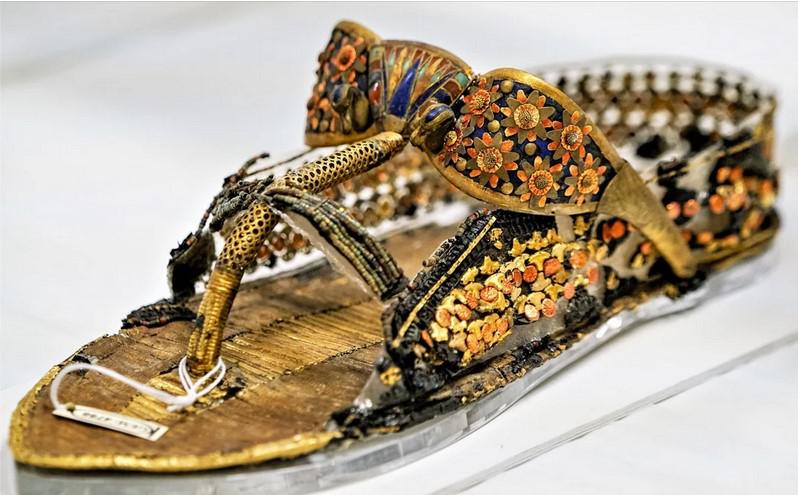
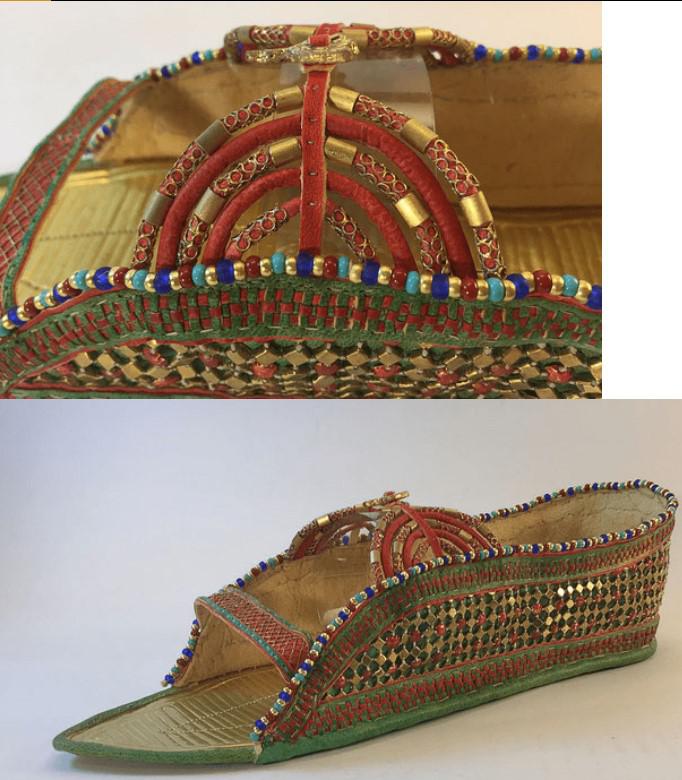
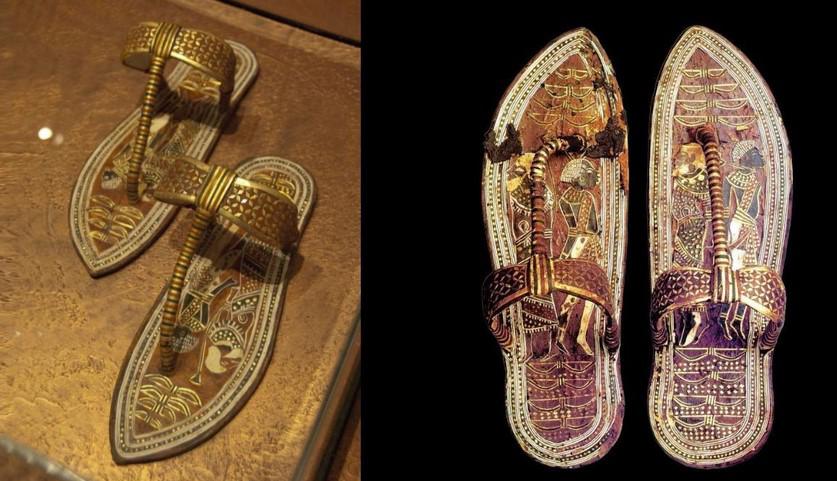
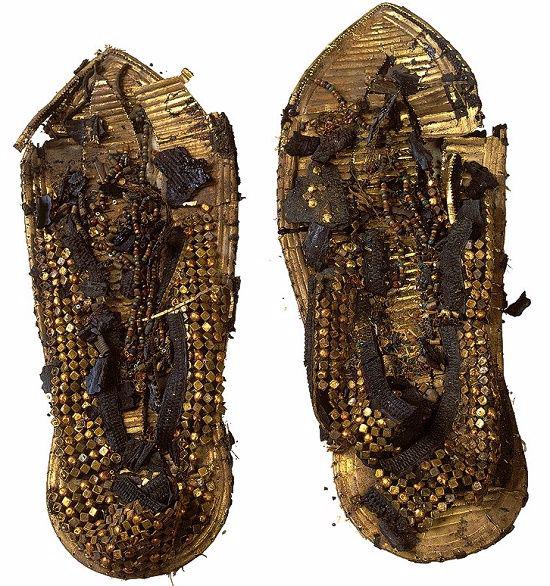
(24) And his concubine, whose name was Reumah, also bore Tevah, Gaham, and Tahash and Maacah.
~ Tahash then means “bead maker” or “embroiderer of leather with beads” and it fits with his brother’s name, Tevah, which means butcher.
Read more
~ On translations of tachash at: https://www.academia.edu/1958707/Hide_or_Hue_Defining_Hebrew_%D7%AA%D6%B7%D6%BC%D7%97%D6%B7%D7%A9%D7%81
~ On the making of faience: https://www.academia.edu/68677591/Egyptian_faience_ancient_making_methods_and_consideration_of_technical_challenges_in_sculptural_practice
~ On the hundred pairs of footwear of King Tut:
https://www.sidestone.com/openaccess/9789088900761.pdf
and:
https://www.egypttoday.com/Article/4/118689/Recent-study-conducted-on-Tutankhamun%E2%80%99s-sandals-reveal-astonishing-findings




